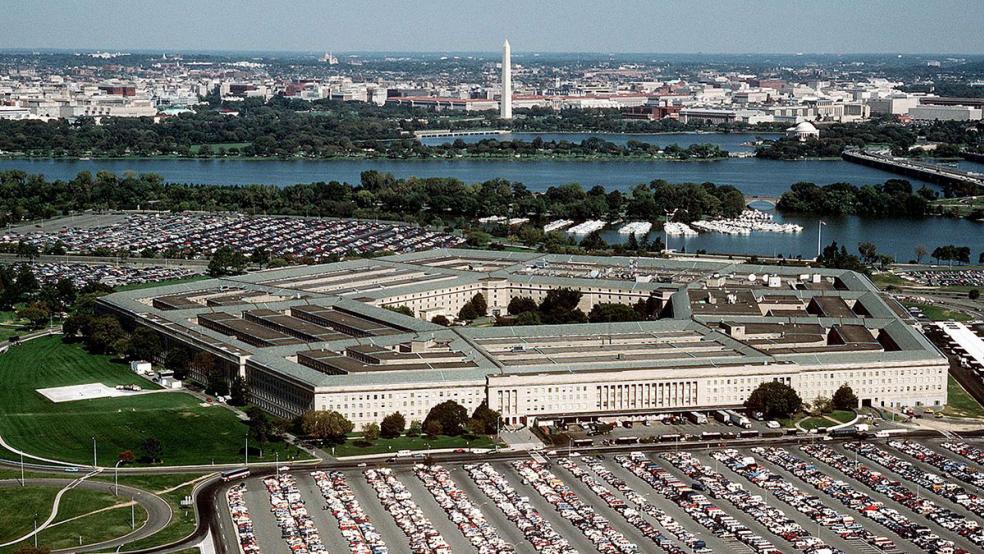The Defense Department makes generous use of contract employees to supplement its hundreds of thousands of full-time civilian employees.
Indeed, roughly 60 percent of the $1.5 billion that was spent government wide on contract workers between 2011 and 2015 went for personal service contracts at the Pentagon and the U.S. Agency for International Development.
Related: Pentagon’s Sloppy Bookkeeping Means $6.5 Trillion Can’t Pass an Audit
But while the Defense Department makes the greatest use of government contract employees, the Pentagon is unable to confirm the extent of its use of these workers because of “significant” DOD reporting error, according to a new report by the Government Accountability Office (GAO).
The government watchdog group that has long criticized the Defense Department for sloppy bookkeeping and major shortcoming in auditing 8.5 trillion dollars of expenditures since the mid-90s once again has raised objections to the Pentagon’s opaque accounting practices.
“The extent to which DOD awards personal service contracts is unknown,” the report states flatly.
Using the Federal Procurement Data System to check up on the Pentagon, GAO was stymied in calculating the military’s use of contract workers because of significant reporting errors by the Air Force and Army.
Related: How the Pentagon Cooks the Books to Hide Massive Waste
Specifically, four of the 15 Air Force contracts and 13 of the 15 Army contracts GAO reviewed were incorrectly recorded in the FPDS. Moreover, the fiscal year 2014 inventories of contracted services within the Air Force, Army and Navy contained personal service contracts that hadn’t been captured by the data system.
By contrast, GAO said that “We did not identify similar issues at USAID, which reported spending more than $123 million on personal services contracts in fiscal year 2015, although both DOD and USAID both undercounted their contract workers for a variety of reasons.
In the simplest of terms, a personal services contract is one that makes contractor personnel appear to be government employees when in fact they are not. About 742,000 of the Pentagon’s 2.8 million employees and military service members are civilian employees. But by one count, there are an additional 700,000 full-time equivalent employees who work under personal service contracts but are not technically federal employees.
These employees are part of what some view as a “shadow government.” They provide important health care, technical, internet, and logistical services to the military and other agencies. However, for the most part, they are invisible to the public and congressional overseers.
Related: The 10 Most Expensive Weapons in the Pentagon’s Arsenal
In 2015, then-Rep. Rep. Chris Van Hollen (D-MD.) asked the Congressional Budget Office (CBO) to determine how many contractor employees were in the federal government. CBO surprisingly responded that “Regrettably, CBO is unaware of any comprehensive information about the size of the federal government’s contracted workforce.”
A 2016 an op-ed published by The Washington Post by John J. DiIulio Jr., the former director of the White House Office of Faith-Based and Community Initiatives, and Paul R. Verkuil, the former chair of the Administrative Conference, estimated that the Pentagon employed about 700,000 full-time employees on assignment from private consulting firms and manufacturers.
Some agency officials say that the distinction between personal services contracts and nonpersonal services contracts “is sometimes difficult to determine.” They said that deciding whether a contract is a personal service is subjective and depends on the interpretation of tasks and supervision, according to the GAO report.
Related: The Pentagon Skips Out on a $10 Billion Debt
GAO recommended in its report that Secretary of Defense James Mattis direct the Air Force and Army to take steps to ensure the accurate recording of personal services contracts in the procurement data system and that USAID ensure the correct authority is cited for personal services contracts performed in the United States. Pentagon and USAID officials concurred with the recommendations.





